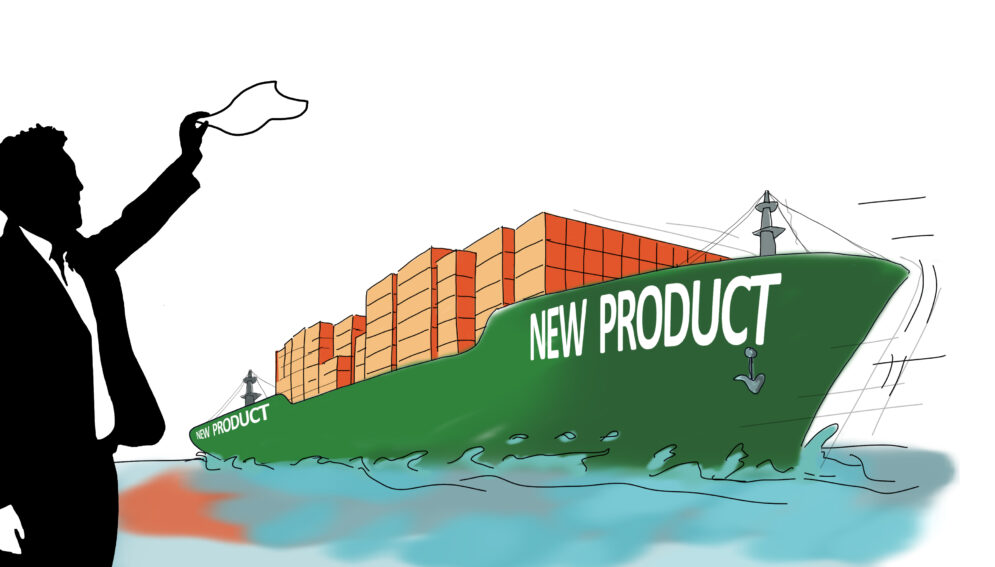According to an article published in the Journal of Product Innovation (2013), the failure rate of new products is 41%, although this figure varies depending on the sector (Castellion, G. & Markham, S., 2013).
It is surprising that almost half of all new products fail when, aside from simply allocating resources, companies normally employ well-known processes for innovation, customer insight, marketing and also sales.
There are several causes behind such commercial tragedies, but they all have a certain aspect in common: the majority of companies that launch new products do so on their own, without strategic partnerships with other companies in the sector with the aim of achieving more comprehensive solutions for their customers.
Another way is possible
Imagine breakfast time on any given day. You open the fridge and pick whatever you fancy: milk, juice, cookies and so on. You sit down to enjoy your breakfast as you read the papers on your tablet.
While this may appear to be a perfectly normal situation, this is not the case for the 8% of the European population who suffer from diabetes. With this group of consumers in mind, in 2013, the mass market manufacturer Calidad Pascual and the pharmaceutical laboratory Esteve decided to launch DiaBalance, a range of everyday food and drink products suitable for diabetics to be sold in supermarkets, as well as a selection of products for exceptional situations, available in chemists. Moreover, they offered advice on their website to help people with the condition.
Each of the two companies contributed their own respective knowledge and experience in their sectors in order to offer a fairly complete solution to people with diabetes, with the objective of making life easier for them.
The boundaries between the food and pharmaceutical industries have been blurred in the project and the companies have managed to offer a full solution to diabetic consumers in a single purchase, a fact that they appreciate (Bröring et al., 2006).
The commercial start-up of the new solution may have been a slow process, but both of the companies are extremely happy with the project and the lessons they have learned from it.
Two other cases: Nike+ and Nespresso
Nike+ iPod were more than just trainers, they were a complete solution achieved through a partnership between Nike and Apple. The shoes enable wearers to monitor and track their physical activity and share their experiences with other users.
Nike’s revenue rose by 10% in the second quarter of 2006, when these trainers went on sale (Angell, 2006). The following quarter saw sales continue to rise by 9%. In less than 6 months, three million pairs of trainers were sold (Nike Inc., 2006).
Due to technological progress in electronics, Nike has now been able to develop this solution without the need for an iPod and, as such, Apple is now longer a necessary partner in the project.
Meanwhile, working together with Miele, Krups, Delonghi and other companies, Nespresso offered its customers a complete solution: a top-quality espresso, highly optimized coffee makers and an extremely well-planned after sales service. All of this was offered with an apparently luxury appearance.
After a slow start, the company’s sales rose by 22% in 2009 in the depths of the recession and the Nespresso Club reached 7 millions members, even with a significantly higher price than the competition.
What underpins these three examples?
Just like Nike+ and Nespresso, DiaBalance is a practical illustration of what is known as convergence. In other words, this is the partnership process between two or more industries that were unconnected up to that point, in a world in which the lines between sectors tend to be blurred (Weaver, 2007).
Orchestrated Solutions
There is extensive literature on convergence. In 2010, I published an academic article with Katia Premazzi in which we coined the term “Orchestrated Innovative Customer Solutions” (OICS):
- A network system with permanent and visible horizontal and/or vertical and/or diagonal links, involving companies that complement their key resources (primarily knowledge) in order to offer a complete, innovative, branded solution to end customers, thereby satisfying their needs.
For a partnership with another company to qualify as an Orchestrated Solution, it must fulfil 6 conditions:
- It must provide a complete solution to one of the customers’ needs, not a partial solution that ignores part of the problem, avoiding the short-sighted attitude that ‘It is nothing to do with us”.
- The response must be truly innovative, not simply an improvement.
- To achieve this solution, the participation of third party companies is required (usually from other sectors), which share their know-how and expertise. A flexible partnership process must usually be adopted with a desire to learn, thereby enabling the partners to increase their capacities dynamically (Teece et al., 1997).
- The partner companies know the solution that they want to conceptualize and create. It is not simply a case of working with good input suppliers. In addition, all of the partners’ brands are visible to the end customer on the end solution.
- Operating as a system, it must involve a new business model, including the visible facets of both the front-end (range, prices, services, customer service and relations, type of sale, website, etc.) and back-end (production, logistics, finance, technical service, etc.).
- Long-term contracts must be established between the partners, ensuring a stable relationship between the companies involved (Weaver, 2007). As large-scale investments are required, albeit not always in equal proportions, the contract must run for a long period in order to ensure an effective ROI.
In short, the Orchestrated Solutions system is currently the most innovative way to launch new products.
It is a method that demands a lot of input: strategic vision and desire, a firm customer-centred focus and a great deal of internal support in terms of time and money.
However, luckily the benefits to be reaped are great: effective differentiation, preference creation, brand development and bigger margins.
To sum up, this is a great management approach for executives who are striving to transform their business, rather than those who are happy to stay in their comfort zone.
______________________________________
Bibliography
- Angell, LC. (2006) “Nike profit boosted by Nike+iPod sales”. iLounge, 21st December
- Bröring, S. et al. (2006) “The front end of innovation in an era of industry convergence: evidence from nutraceuticals and functional foods”, R&D Management vol. 36. Oxford, Blackwell Publishing Ltd.
- Castellion, G. & Markham, S. (2013) “Perspective: New product failure rates: Influence of Argumentum ad Populum and self-interest”, Journal of Product Innovation Management, pp. 976-979
- Martínez Ribes, Lluís; Premazzi, Katia. “Orchestrated innovative customer solutions: an emerging trend to master convergence?”, Finanza Marketing & Produzione, Vol. 28, nº 3-2010, 09/2010, pp. 89-122
- Nike Inc. (2006) “F2Q07 Earnings Call Transcript”, 20th December
- Teather, D. (2010) “Clooney’s Nespresso steams ahead with 35.5% sales growth in UK”, The Guardian, 9th April.
- Teece, D. et al. (1997) “Dynamic capabilities and strategic management”, Strategic Management Journal.
- Weaver, B. (2007) “Industry convergence. Driving forces, factors and consequences”, Lund, The Institute of Eco
______________________________________
Lluis Martinez-Ribes
Source: Código 84, number 184
February 2015




